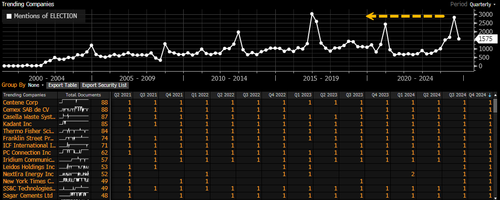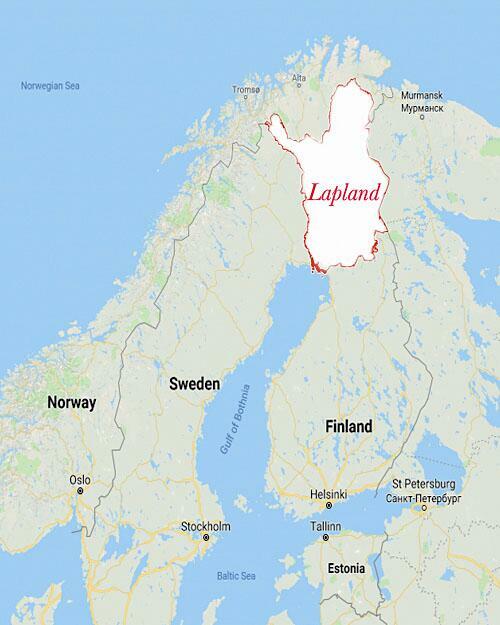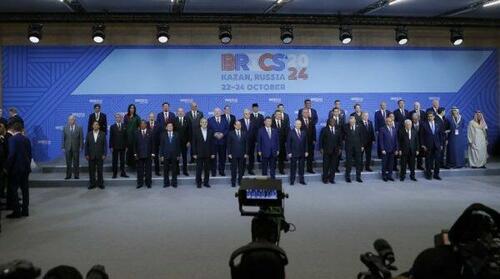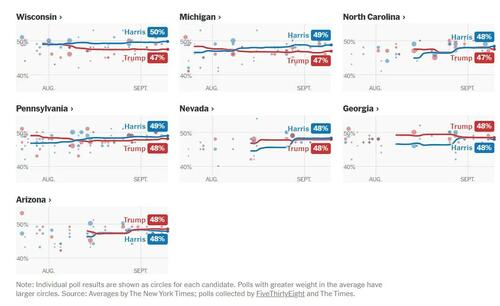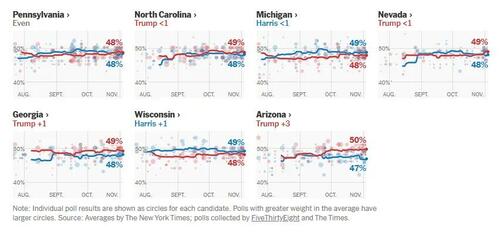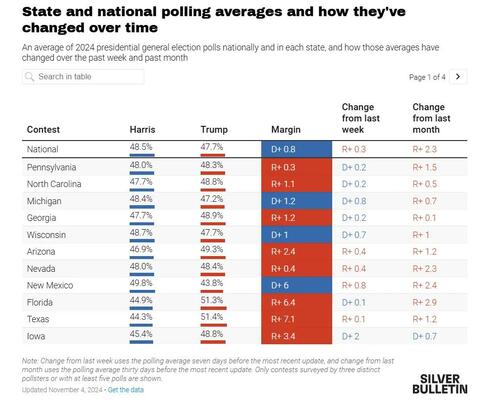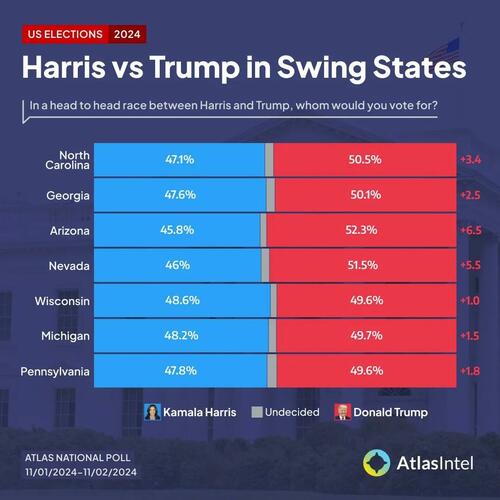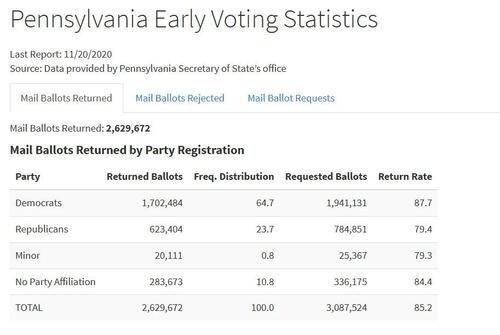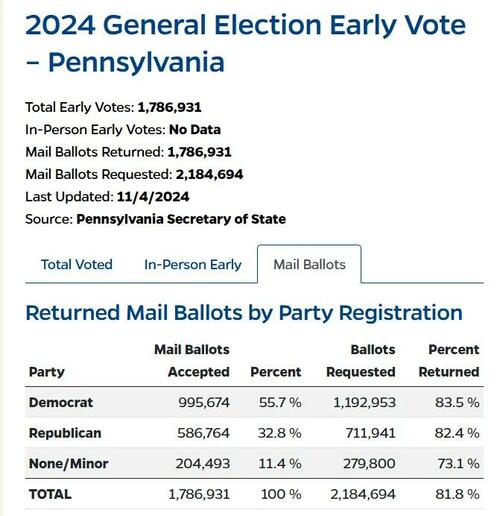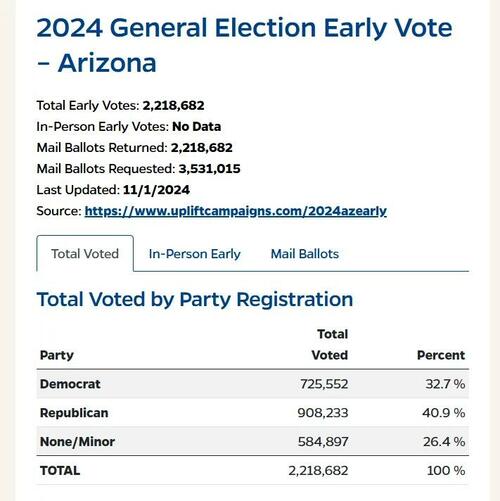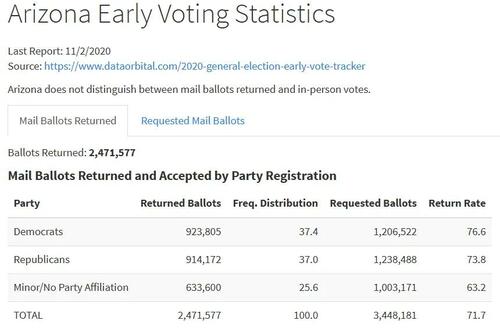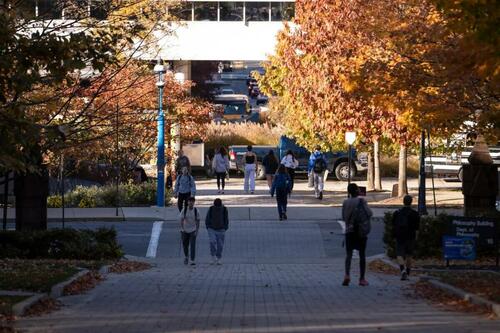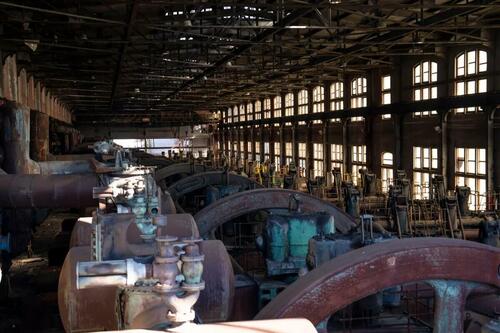The Great Blunder In Public Finance
Authored by ‘Economart’ via The New Economics substack,
Why so many go so wrong on public debt.
I have been involved in the study of economics for about 30 years. What spurred my interest was the discovery of a major blunder in the field of Public Finance that has caused centuries of misery, poverty and tyranny. The strange thing is that we all know of this blunder in various ways, but inexplicably refuse to incorporate the information into reasoning on this most important subject. It is beyond me why the learned and lettered people of Finance and economics allow this fundamental and dubious premise, passively accepted for millennia, to persist.
A long time ago, it was thought that a government should raise funds solely by Taxation for some very good reasons. Taxation consisted of a simple transfer of funds from citizens to government for services rendered. Public borrowing consisted of an interest bearing loan with specific terms for repayment. When the note came due, not only the original amount borrowed, but accruing interest, the price of borrowing, had to be remitted to the lender. Why incur the extra cost inherent in borrowing when government could avoid it via an initial tax transfer!
In summary, moderate pain now rather than greater pain later was preferable.
This conclusion, reasoned through with ease, unfortunately fails to account the profound and broad effects and costs of Taxation. In fact, such costs are rarely and inexplicably considered, they being held a negligible charge when compared with the accruing cost of interest in public borrowing. And when heeded and investigated by the rare few, they are quickly dismissed. Thus, through millennia of Taxation, an erroneous notion has developed with repeated reinforcement that government funds itself; That taking from citizens is essentially the same as the generation of revenues by a business, firm or individual through the satisfaction of the needs of consumers or employers in the market place.
The questionable nature of this premise may be neatly demonstrated in one simple query about deficits.
Suppose the the US Federal Government extracts from the citizens of its jurisdiction $4 trillion in taxes. It then spends $5 trillion. When asked what the deficit is, most invariably respond with $1 trillion. When asked a follow up: “How much did the Government contribute to its expenditures?” Hesitation emerges and the fun begins.
Depending on how one answers, his views, whether recent or long held on Public Finance, on deficits, on taxation and borrowing, could turn a sharp 180 degrees.
In favor of a 180 degree turn, I argue it is self-evident that government contributes nothing to its expenditures; That the taxed funds are derived from the finances and assets of taxpayers; that government must always turn to them for the means to underwrite its public expenditures.
Whether project costs, handouts, public debt repayment, or interest owed, the government invariably thrusts its bills on to resident citizens resident for settlement. If it were government money, it would be unnecessary for citizens to elect and send their political representatives to government legislative bodies to control and manage the collection and expenditure of such funds.
So how could one construe the taxed funds as government funds when it has no money or, rather, resources? One cannot. Therefore, the government’s deficit must always be the whole of its expenditures, and not just the comparatively lesser amount spent in excess of tax revenues.
Some might respond that it is wrong to change the definition of Deficit, that it represents a worthy distinction between taxed and borrowed funds, between funds bearing an interest charge that must eventually be repaid, and those that don’t. Thus, the definition shouldn’t be revised. But dismissing the controversy doesn’t really get at the heart of the matter.
A number of economists, even the very eminent, are led into bemusing difficulty by this faulty premise. I have spent considerable time reading the varied entries on informative web sites of free market economists and organizations such as Café Hayek, AIER, Mises and the Future of Freedom Foundation. In commenting on the recent Debt Ceiling circus, many start off arguing against public debt, then end up arguing against excessive public spending. If public debt issuance is the problem, then it would seem that all is resolved were government to restrict its spending merely to funds taxed. If the problem be excessive or, rather, wasteful government expenditure, then the obvious remedy would be its curtailment.
But is it right to argue, as it indeed appears, that government may spend as much as it pleases, even wasting large sums, as long as funds arrive by taxation; that all is well in the financial universe as long as no public debt is issued? Is it right to simultaneously equate public expenditures funded through the issuance of public debt with waste? It is highly doubtful that all debt financed public expenditures are wasteful, just as it is highly doubtful that all tax funded public expenditures are worthy.
I do not mean to single out the free marketeers, as such reasoning clearly is not restricted to them. They count among the many who fail to recognize the blunder that repeatedly ensnares them all.
Regardless of the controversy, let us imagine there is some deficiency in the conventional analysis of deficits. Since there are immense costs in both Taxation and Borrowing, an earnest effort at investigating the issue may lead to worthy insight and a resolution of the dilemma.
I have already discussed the fact that government does not fund government, that the deficit is the whole of public expenditures and not just a portion. Truly, it is not a concern for government as to how it collects the required funds or from whom, whether funds arrive by taxation or borrowing, whether from locals or foreigners. All that matters is that the government’s bank account is repeatedly replenished.
But it certainly matters to those supplying the funds, and the burden of public expenditures or debts must fall on the assets, property and income of taxpayers or resident citizens. The clear question becomes whether government should levy taxes upon or borrow from this agglomeration of assets. The analysis, a simple adding up of the costs of taxation and its benefits may yield astounding results. If the benefits of Taxation exceed its costs, then the state should retain Taxation. However, if the costs of Taxation exceed its benefit of interest savings on public debt, the state should borrow.
Without proper assessment or investigation of the true costs of either Taxation or Borrowing, consensus has always led economists, financial thinkers, and government leadership to choose Taxation over Borrowing. With proper assessment of the benignity or malignancy of interest on public debt in place of general declarations of gross injury we are enlightened, and one should then be able to solve with unknown facility the dilemma of whether government has a borrowing or spending problem.
Tyler Durden
Tue, 11/05/2024 – 06:30
via ZeroHedge News https://ift.tt/BNEJ1eO Tyler Durden


